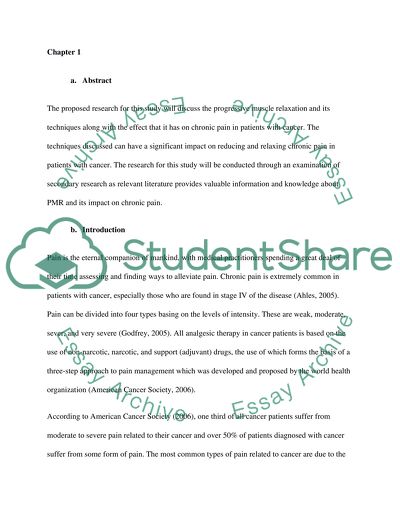Cite this document
(“Proposed research on effects of progressive muscle relaxation Essay”, n.d.)
Retrieved from https://studentshare.org/nursing/1403216-a-proposal-to-review-the-effect-of-progressive
Retrieved from https://studentshare.org/nursing/1403216-a-proposal-to-review-the-effect-of-progressive
(Proposed Research on Effects of Progressive Muscle Relaxation Essay)
https://studentshare.org/nursing/1403216-a-proposal-to-review-the-effect-of-progressive.
https://studentshare.org/nursing/1403216-a-proposal-to-review-the-effect-of-progressive.
“Proposed Research on Effects of Progressive Muscle Relaxation Essay”, n.d. https://studentshare.org/nursing/1403216-a-proposal-to-review-the-effect-of-progressive.


